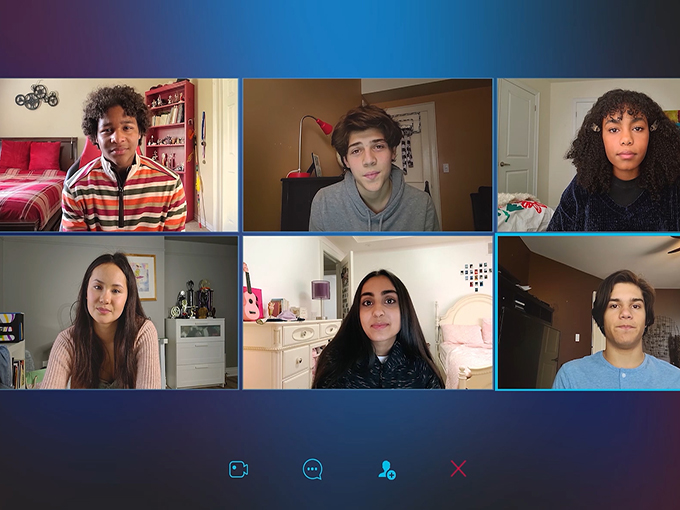YouTube announced its US$100-million kids content fund in September and spent months plotting what types of programming would get a piece of that cash. Then the pandemic hit in March, plans were tossed, and a new series from Sinking Ship emerged.
The live-action scripted series Lockdown (pictured) premiered on June 26 on the YouTube Originals kids and family channel, with new episodes launching throughout the summer. It is the first series to receive money from the AVOD’s US$100 million content fund.
Inspired by how lockdowns were affecting kids globally, Sinking Ship co-founder and executive producer J.J. Johnson pitched the idea to YouTube Original’s head of kids, family and learning Nadine Zylstra and Daniel Haack, creative exec for programming. The timing worked, as the duo were looking for a way of reaching kids stuck at home with content that reflected their lived experiences.
“When we made Lockdown, we were mindful of what is happening in the world around COVID-19, and wanted to know how do we create programming that aligns with this big learning framework we built and still delivers on relevance,” says Zylstra. “We looked at the lessons we can help kids pull out of this experience that speak to our broader goals.”
When the content fund was first announced, Zylstra and Haack spent a lot of time thinking about which types of content they hoped to finance, revealing some key pillars to Kidscreen for the first time.
At a top-level, every show should help kids uncover their “unique strengths and passions,” since YouTube is a place where kids often go to find niche content that speaks just to them, says Zylstra. Working with educational advisors and consultant, series should fall into at least one or more specific pillars, including: giving kids the confidence to pursue their own dreams and goals (life skills, career aspirations); exploring personal goals through a lens of health and self care; reflecting diversity; and finally encouraging community and citizenship.
These pillars follow a 12-word criteria pitch guide, which was obtained by Kidscreen in February.
Going forward, “we want a slate that’s as diverse as people would expect coming to YouTube, so we’re pretty open to any kind of format,” says Haack. He says they’re looking for a little bit of everything, from live-action and reality, to animated and stop motion. Zylstra adds that the platform is really looking to fund content that is uniquely suited to YouTube, such as Lockdown.
Lockdown, for example, is all about community and citizenship, and kids making sense of the world around them, says Zylstra.
The 10 episodes were shot entirely on webcam and smartphones, and is a suspenseful look at how kids stay in touch while having to stay away from each other. The way the show is filmed makes it a natural fit for the platform, and really couldn’t have lived anywhere else, says Zylstra.
It was greenlit almost immediately, going from pitch to launch in only a few months. It’s already won a Prix Jeuness award.
Moving forward, neither can say whether the Lockdown will get a second season. However, the idea of being in lockdown ended up being relevant for much longer than anyone thought it would be. Originally Zylstra says she was worried they’d create this whole show and then before it could launch lockdowns would lift and it would no longer be relevant.
“Sadly for many kids it looks like stay-at-home is going to be relevant for a long time in some form,” says Zylstra. “This topic could be very relevant for the long haul.”
























